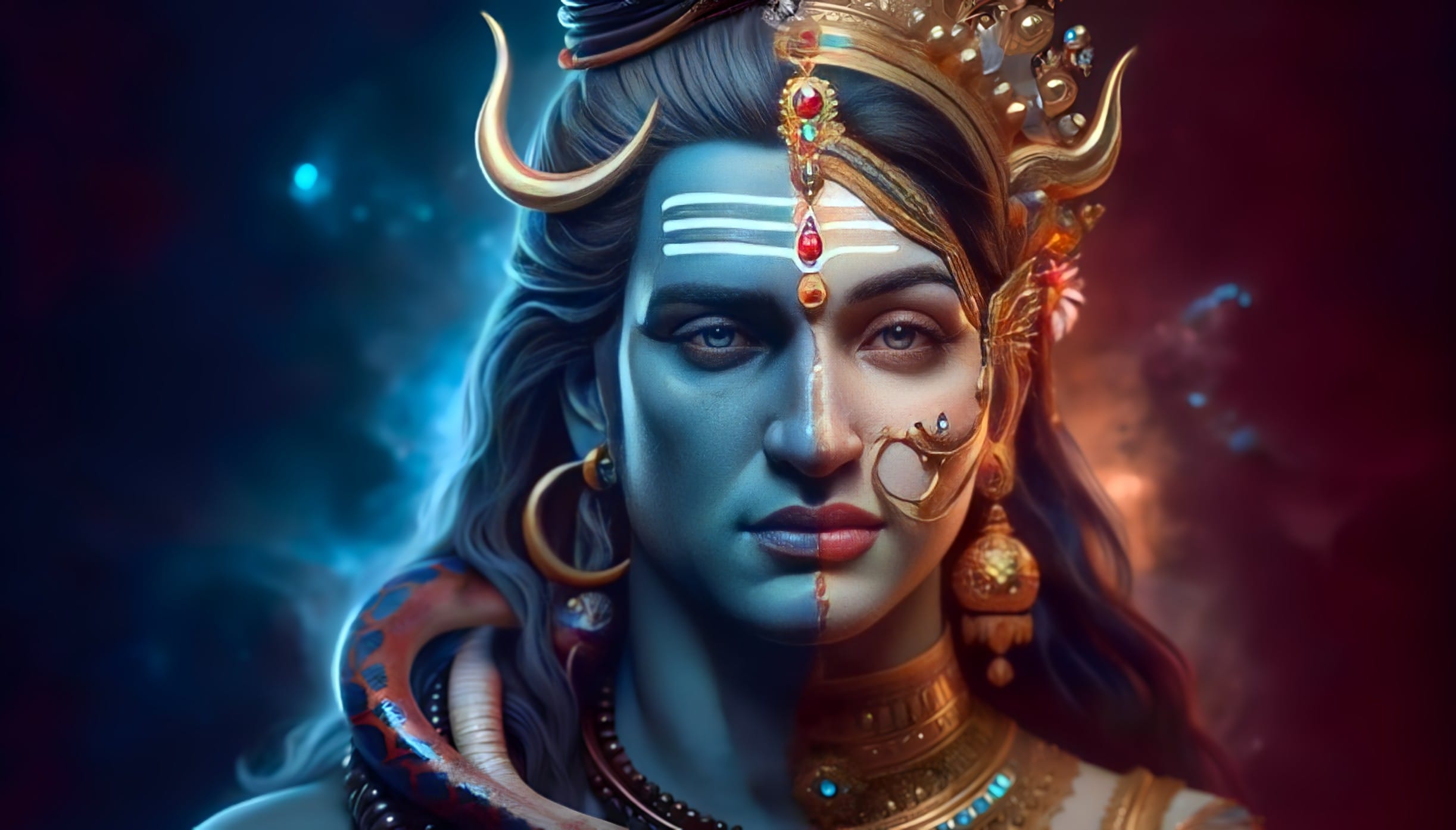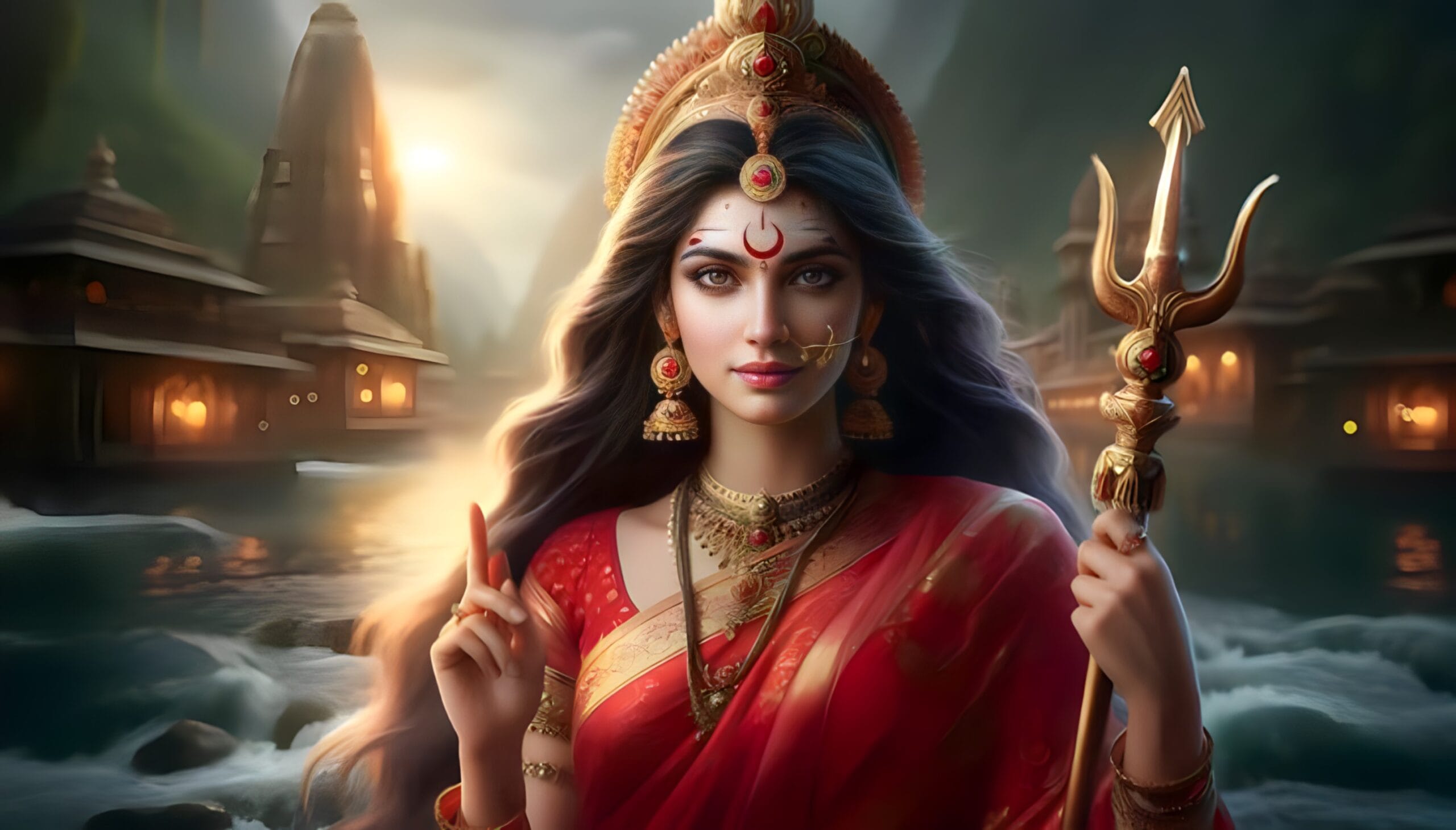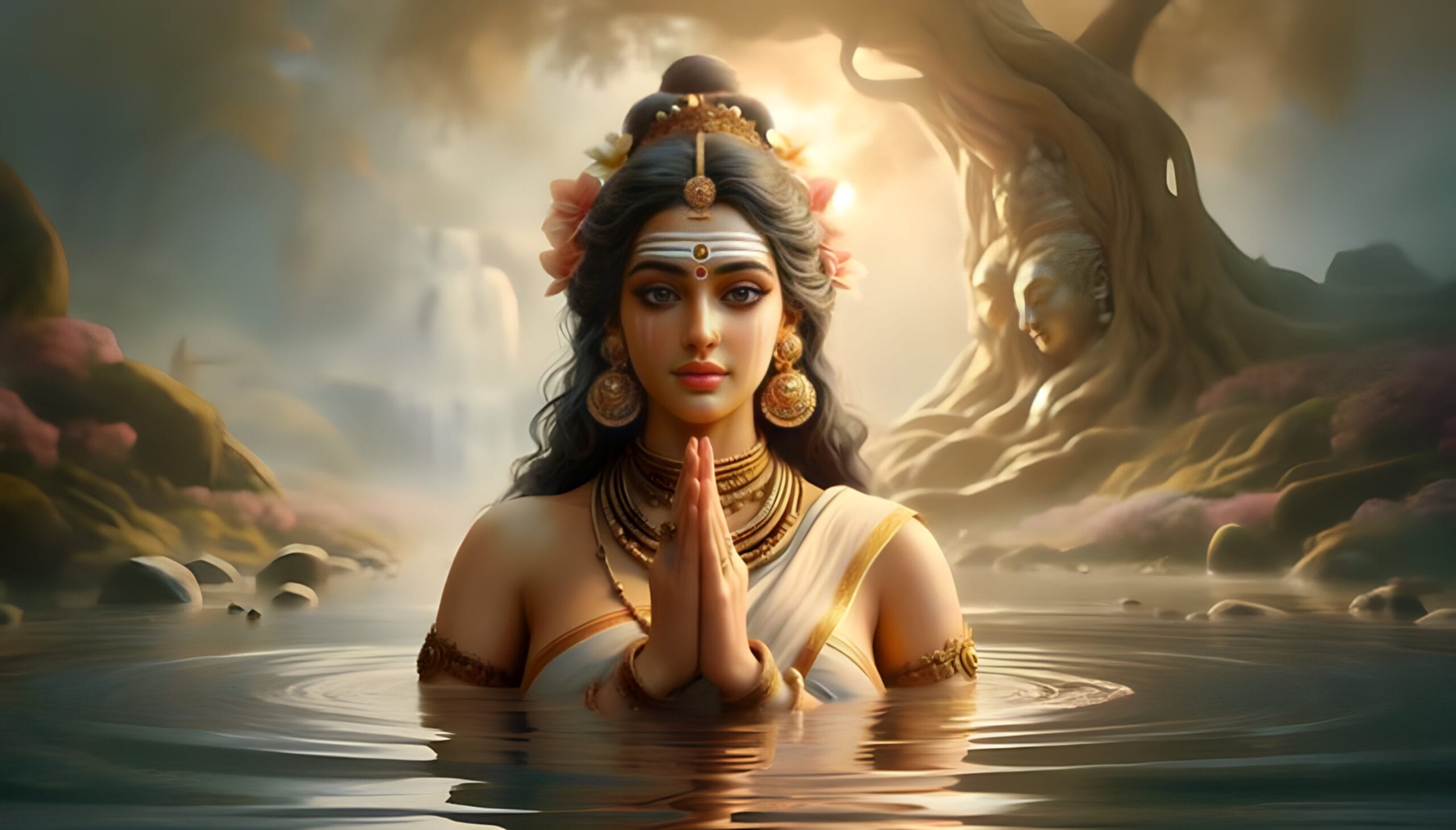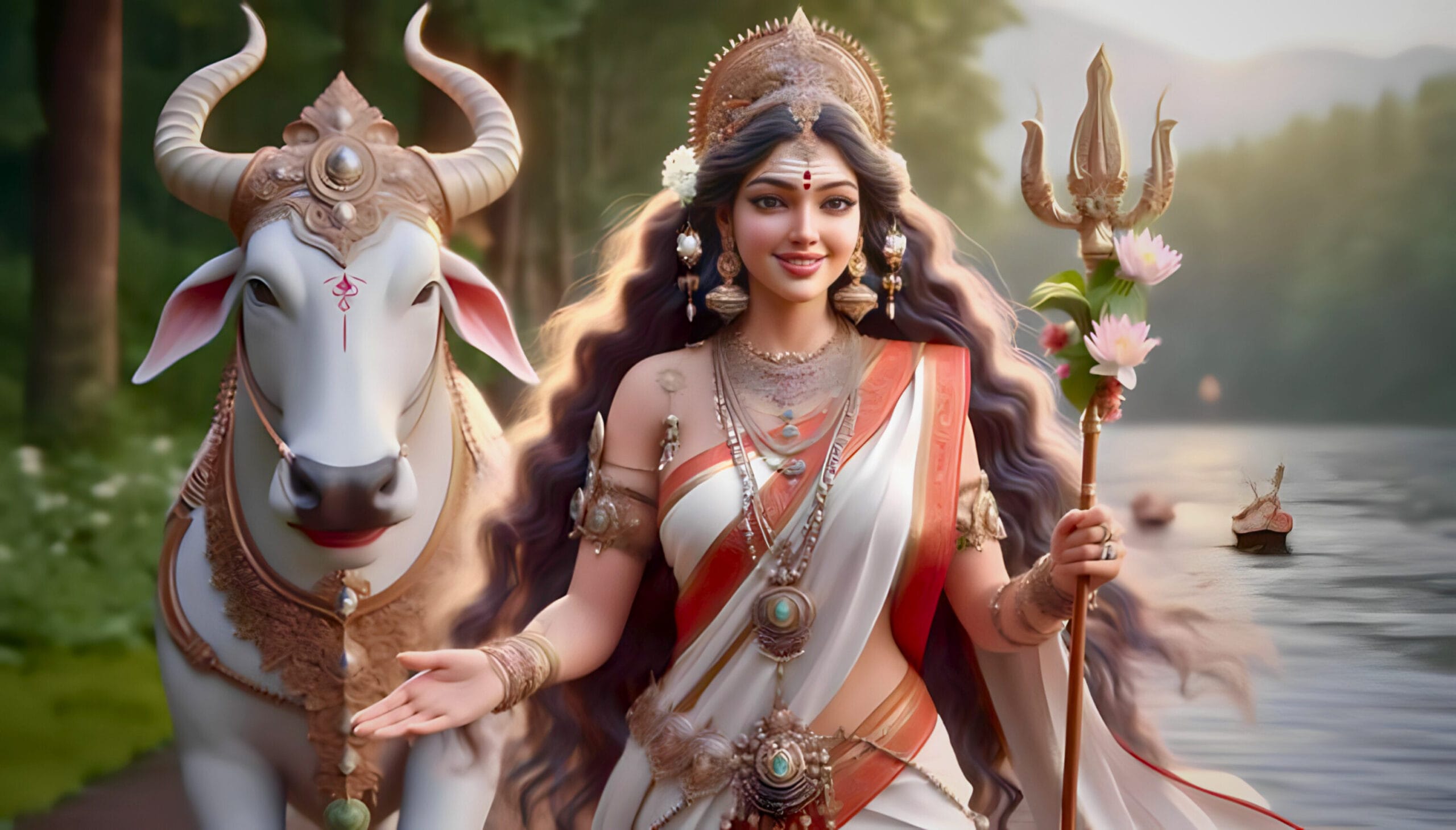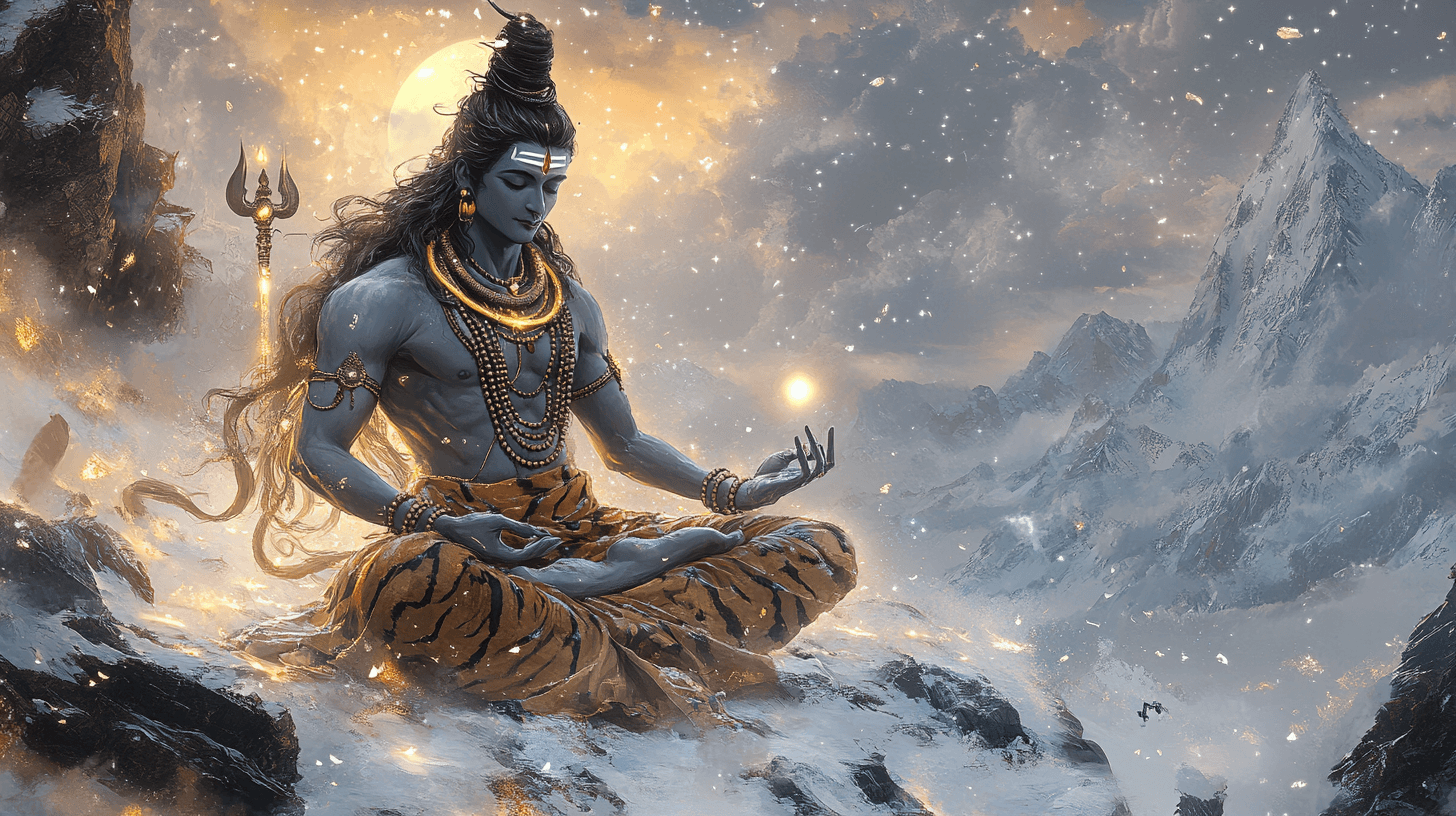Ardhanarishvara is a divine form where Shiva and Shakti exist together in one body, half-man and half-woman. But why did the divine choose to appear in this form? And even more mysterious, why did they separate after being one?
This form is not just symbolic, it holds the secret of balance, creation and cosmic order. In the beginning, there was no man, no woman, no form— only pure energy and consciousness and when these two came together, the universe began.

But if they were complete together, what was the need for separation? Who decided it? And how did this separation influence the process of creation? The story of Ardhanarishvara isn’t just about gods — it’s about the origin of everything and once you understand it, the way you see balance, life and even yourself, might never be the same.
Ardhanarishvara Form
Long ago, before the universe came into being, there was only silence. There was no sky, no earth, no light, and not even time. In the midst of that endless stillness, Shiva existed as pure consciousness. He was formless, unmoving and beyond all action.
But consciousness alone could not create anything. Creation needs more than awareness. it needs energy, motion and purpose. From that left half of Shiva’s own being, a powerful and radiant force emerged. That force was Shakti, the divine feminine energy.
Shakti was not separate from Shiva. She was a part of him. Together, they took a unique form known as Ardhanarishvara— one divine body, with two equal halves: one side as Shiva and the other as Shakti.
This Ardhanarishvara form was not just symbolic. It was the very foundation of creation, showing that true balance exists when both the masculine and feminine energies are united in perfect harmony.
Meaning of Ardhanarishvara
The word “Ardhanarishvara” or “Ardhnarishwar” is made up of three parts. The word “Ardha” means half, “Nari” means woman, and “Ishvara” means lord. Together, the name Ardhanarishvara means “The Lord Who Is Half Woman.”
In this divine form, one side of the body is Shiva, the peaceful and meditative figure who represents stillness and awareness. The other side is Shakti, shining with grace, energy and beauty, symbolizing power and movement. When joined together, they become one complete being.

This Ardhanarishvara form teaches a powerful message that true creation happens only when masculine and feminine energies work in unity. Without one, the other cannot function fully.
But why is this idea so important? Because it reminds us that neither energy is complete on its own. Shiva gives direction, but it is Shakti who provides the power to move forward. Shiva represents calmness, while Shakti brings action. One cannot exist without the other. Yet both are equally divine and necessary for balance in the universe.
Separation of Ardhanarishvara
If Shiva and Shakti were already united in one Ardhanarishvara form, why did they separate? The answer lies in the deeper meaning of creation.
When Lord Brahma, the creator of the universe, began his work, he soon realized something was missing. His creations were not stable. Life was not developing as it should. There was no rhythm, no balance and no lasting order in the world he was trying to shape.
Seeing this difficulty, Brahma decided to perform deep meditation and prayed with devotion to Lord Shiva for guidance. Pleased by Brahma’s sincere penance, Shiva appeared before him in the sacred form of Ardhanarishvara.

Brahma was surprised to see this divine figure, where one half was male and the other was female. Curious and eager to understand, Brahma asked- “What is the meaning behind this half man and half woman form?” Shiva smiled and explained- “Creation can only continue when both masculine and feminine energies exist in harmony. Without both, there can be no life and no balance in the universe.”
But then, something surprising and deeply symbolic happened. Right in front of Brahma, Shiva gently separated Shakti from his own body. Now, Shakti stood beside him as her own divine presence, independent and glowing with energy. But why did Shiva do this? It was not because he wished to be apart from Shakti.
It was because this separation was necessary for creation to truly begin. Only when consciousness (Shiva) and energy (Shakti) became two distinct forces, could they interact, evolve and give rise to the world we live in. This separation was not the end of their union. Instead, it was the start of creation— the beginning of time, space, matter and life itself.
Watch this story come alive in our YouTube video click here to watch now.
After Shiva and Shakti Separation
After the divine separation, Shakti continued her journey through time by taking on many different forms. Her purpose remained the same— to reunite with Shiva and restore the cosmic balance.
In one of her earliest forms, Shakti was born as Sati, the daughter of King Daksha and Queen Prasuti. Drawn by their eternal connection, Sati chose Shiva as her husband and through their marriage, the two energies were united once again.
However, their happiness was short lived. When Sati’s father insulted Shiva and refused to accept their union, Sati could not bear the disrespect shown to her divine consort. In deep sorrow, she gave up her life through self immolation.

This loss left Shiva in unbearable grief. Heartbroken, he withdrew from the world and went into deep meditation. He renounced all worldly connection and became completely detached but the cycle was not over.
Also read our previous blog: How Nandi Saved Shiva from Halahala During Samudra Manthan? A surprising tale of devotion and divine protection.
Continuance Separation & Reunion
To bring Shiva back into the world and restore balance once again, Shakti was reborn as Parvati, the daughter of the Himalayas and Queen Maina. As Parvati, she was full of love, patience and determination. She performed long and intense penance to prove her devotion to Shiva.
Moved by her deep love and sacrifice, Shiva slowly opened his heart once again. He accepted Parvati as his wife and through this reunion, Shiva and Shakti were once more brought together — not just as divine forms, but as soulmates, partners and creators of the universe.

This cycle of separation and reunion did not only happen once. It continues to repeat— not just in their story, but also within nature, time and every living being. Just as night follows day and life follows death, the dance of Shiva and Shakti represents the ongoing rhythm of creation and transformation.
Conclusion
The story of Ardhanarishvara is not just about gods. It is a reminder of balance in life. Each of us carries both Shiva and Shakti within — the calm and the action, the strength and the softness. When these are balanced, we feel complete. Even in relationships, this story teaches us that both energies are equal. One is not greater than the other. They support and complete one another.
So, why did Brahma ask Shiva for help? Because only the combined energy of Shiva and Shakti could make creation strong and lasting. And Why did Shiva separate Shakti? Because separation created space for creation to begin and grow.
This story still matter today because even now, we all seek balance — within ourselves, and in the world around us. Shiva and Shakti are never truly apart. Even when separated, their connection remains strong.
Till then, keep reading Vedic Stories.




